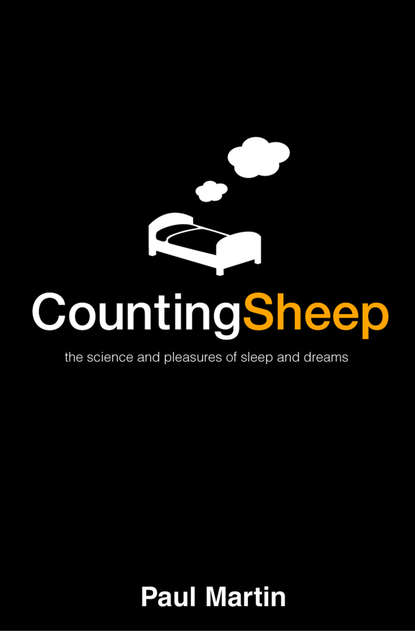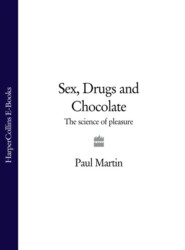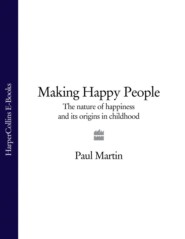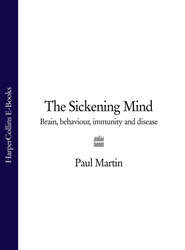По всем вопросам обращайтесь на: info@litportal.ru
(©) 2003-2024.
✖
Counting Sheep: The Science and Pleasures of Sleep and Dreams
Настройки чтения
Размер шрифта
Высота строк
Поля
Sleep rock thy brain.
William Shakespeare, Hamlet (1601)
Now it is time to peer beneath the surface at the strange state of existence known as sleep – or, to be more precise, the two strange states of existence known as sleep.
All of human life is spent in one of three states. You are very familiar with one of them: it is called the waking state, or consciousness, and it forms the subject matter for almost everything that has ever been said, written, acted, painted or composed about humanity. When scientists analyse the mind, when novelists dissect the human condition and when biographers portray the lives of eminent individuals, it is the waking state they almost invariably describe. However, there are two other distinct states of existence that together account for at least a third of each life. They labour under the workaday names of Rapid Eye Movement (REM) sleep and Non-Rapid Eye Movement (NREM) sleep, and we are about to take a closer look at them.
A night’s sleep is a complex and cyclic process, comprising several distinct patterns of brain activity and behaviour, with alternating episodes of NREM sleep and REM sleep. We will follow the sleep cycle from the beginning, starting with the transition from the waking state. But before we do that, a quick word about how scientists know what is going on when we are asleep.
Measuring sleep (#ulink_1726e0c8-aadf-5969-b848-c38cd4d3615b)
Brains wave.
Owen Flanagan, Dreaming Souls (2000)
The sleeping brain reveals what is going on inside itself in various ways, both electrically and chemically. Since the middle of the twentieth century, the main tool for monitoring sleep has been the electroencephalograph. This machine exploits the fortunate fact that varying patterns of electrical activity within the brain manifest themselves as varying patterns of voltage changes on the surface of the scalp.
The brain comprises billions of nerve cells, or neurons, and although the electrical activity of an individual neuron is too faint to be detected outside the skull, it is possible to monitor the gross patterns generated collectively by large numbers of neurons. These show up as minute voltage changes, which can be detected by electrodes stuck onto the scalp. (The very first electrodes were small pins that were stuck into the scalps of stoical volunteers.) Thus, the brain emits electrical signals revealing information about its inner state. These tiny voltage patterns are amplified and displayed as the familiar ‘brain waves’ of the electroencephalogram, or EEG. (Confusingly, the machine is called an electroencephalograph, while the graph it produces is called an electroencephalogram, or EEG. To avoid nausea, I will use EEG to denote both the machine and its output.)
The EEG was invented in the 1920s by a psychiatrist named Hans Berger. It really came into its own in the 1950s when, as we shall see, it enabled the discovery of REM sleep. Before the invention of the EEG, scientists could only assess sleep by observing overt body movements, or the lack of them. Scientists still find it useful to record sleepers’ body movements, especially in studies of sleep patterns under natural conditions where the use of EEG would be too intrusive or too expensive. Nowadays, body movements are usually logged automatically, using a miniature recorder worn on the wrist.
Sleep laboratories use an extension of the EEG called the polysomnograph – a sort of somnolent variation on the polygraph. A polysomnograph records the EEG brain waves, together with other informative measures of the sleeper’s physiological state and behaviour. Electrodes placed near the corners of the eyes detect movements of the eyeballs, producing a trace known as the electro-oculogram, or EOG. Other electrodes placed on the chin and neck monitor the muscle tone (producing an electromyogram, or EMG) while electrodes on the chest record the heart rhythms (electrocardiogram, or ECG). Additional devices may record whole body movements, breathing, the flow of air through the nose and mouth, and the concentration of oxygen in the blood. In the early days of sleep science, these measurements were recorded as continuous pen traces on miles of rapidly unfurling paper, but nowadays the outputs are usually stored digitally.
In recent decades, brain scanning has become an increasingly important tool in sleep research. One of the main brain-scanning techniques is called positron emission tomography (PET). PET scans reveal the local patterns of blood flow and oxygen uptake within small areas of the brain by measuring how rapidly the tissue is using energy. Unlike some brain-scanning techniques, PET does not require the subject to sleep inside a large, claustrophobia-inducing scanning device. It therefore allows scientists to monitor sleep under conditions that are slightly closer to normality. Even so, the sleeping subject’s head needs to be kept absolutely still, which is usually achieved by pinning the head down with a special mask (the stuff of some people’s nightmares).
Most measurements of sleep are made in specialised sleep laboratories rather than people’s own homes. The underlying assumption is that the sleep patterns observed in the laboratory closely resemble the real thing. Fortunately, this turns out to be a broadly valid assumption. Comparisons have confirmed that for most people there is a reasonably good concordance between their sleep patterns at home and in the sleep laboratory. But there are some systematic differences. In particular, people tend to sleep for a slightly shorter period under laboratory conditions and to wake up slightly earlier than they would normally. They also have less bizarre dreams and fewer wet dreams. (Wouldn’t you?)
Falling asleep again, what am I to do? (#ulink_b330ab61-a9f6-5a33-a7d6-2ff7e618681b)
Warm beds: warm full blooded life.
James Joyce, Ulysses (1922)
Falling asleep is not an abrupt process, like turning off a light, although it can seem like that because you usually forget about it. Recordings of brain-wave activity and other physiological variables show that falling asleep is in fact a continuous process, which starts from a state of relaxed drowsiness and ends in the first or second stages of unequivocal sleep.
During that process of falling asleep you may find yourself temporarily suspended for several minutes between the worlds of waking consciousness and sleep. This transition phase is often accompanied by strange thoughts, dreamlike images and occasional hallucinations. In one of his short stories, Washington Irving described how the mind can roam far and wide while it is in this pre-sleep state:
My uncle lay with his eyes half closed, and his nightcap drawn almost down to his nose. His fancy was already wandering, and began to mingle up the present scene with the crater of Vesuvius, the French Opera, the Coliseum at Rome, Dolly’s Chop house in London, and all the farrago of noted places with which the brain of a traveller is crammed – in a word, he was just falling asleep.
These dreamlike experiences occur when we are in what is known as the hypnagogic state – a twilight zone partway between wakefulness and sleep. They are referred to as hypnagogic (or sleep-onset) dreams and they are distinct from ordinary dreams, which do not occur until much later in the sleep cycle. Hypnagogic dreams can contain all the basic elements of ordinary dreams, including bizarre plots, visual images and sounds, but there are fewer of these features in any one dream, suggesting that hypnagogic dreaming is a reduced version of normal dreaming. Similar dreamlike experiences can also occur at the other end of a night’s sleep, during the transition from sleep to wakefulness, when they are known as hypnopompic dreams.
The hypnagogic and hypnopompic states are strange and fascinating. In comparison with true sleep and ordinary dreams, they are also poorly researched and poorly understood. Indeed, the English language does not even have a decent name for them – unlike Italian, which has a single word for both (dormiveglia, or ‘sleep-waking’). In English, hypnagogic dreams are colloquially referred to by a variety of vague terms such as ‘faces in the dark’ or ‘visions of half-asleep’. As we shall see in a later chapter, many famous creative flashes and inspired thoughts have come to people while in the hypnagogic state.
During hypnagogic dreams we may see strange sights, hear strange sounds and think strange thoughts. As our wakefulness fluctuates, we may wake up again and consciously remember the strange things we have briefly been dreaming. This hypnagogic nonsense sometimes includes bizarre, invented words. The sleep researcher Ian Oswald recalled waking from one hypnagogic dream with the phrase ‘or squawns of medication allow me to ungather’ running through his mind. On another occasion he found himself musing on the hypnagogic thought that ‘it’s rather indoctrinecal’. A British magazine once printed a collection of hypnagogic ramblings sent in by readers. These included the immortal verse ‘Only God and Henry Ford have no umbilical cord.’
Hypnagogic thoughts and images can be more coherent, however. Charles Dickens often fell into a half-sleeping state while on one of his long nocturnal walks, and he could compose poetry while in this reverie. Dickens wrote of how, one night, he got out of bed at two in the morning and walked thirty miles into the countryside:
I fell asleep to the monotonous sound of my own feet, doing their regular four miles an hour. Mile after mile I walked, without the slightest sense of exertion, dozing heavily and dreaming constantly … It is a curiosity of broken sleep that I made immense quantities of verses on that pedestrian occasion (of course I never make any when I am in my right senses), and that I spoke a certain language once pretty familiar to me, but which I have nearly forgotten from disuse, with fluency. Of both these phenomena I have such frequent experience in the state between sleeping and waking, that I sometimes argue with myself that I know I cannot be awake, for, if I were, I should not be half so ready.
People who play lots of computer games sometimes experience ‘screen dreams’ as they fall asleep, in which they see vivid images of the game they have been playing. These screen dreams are also products of the hypnagogic state. The computer game Tetris, which requires the player to fit together coloured shapes as they cascade down the screen, is well known for provoking hypnagogic dreams. Scientists at Harvard Medical School investigated screen dreams by getting volunteers to play Tetris for several hours. Many of them experienced vivid dreams about Tetris as they fell asleep. Among the subjects in this experiment were five amnesiac patients who had extensive brain damage in their temporal medial lobes – brain regions crucial for conscious memory. Three of the five amnesiacs experienced hypnagogic dreams of Tetris even though they had no conscious memory of playing the game. This implies that the brain can generate hypnagogic dreams without input from conscious memory.
The length of time it takes you to fall asleep, once you have lain down and shut your eyes, is known as your sleep latency. It varies according to lots of factors. As we saw earlier, very short sleep latencies usually indicate sleep deprivation, whereas very long sleep latencies may signify other problems. A study of people living in rural Oxfordshire found that those with the longest sleep latencies typically described themselves as bored or mildly ill. You can make yourself fall asleep faster if you are minded to do so. Researchers proved this by giving volunteers a financial incentive to fall asleep quickly at various times during the day. The paid volunteers fell asleep faster than subjects who had no financial incentive.
Your body temperature has a big influence on how fast you fall asleep. A night’s sleep is normally preceded by a drop in core body temperature, and scientists have established that this drop in temperature actively facilitates the onset of sleep. Under normal conditions, the maximum rate of decrease in body temperature occurs about one hour before the onset of sleep. If the onset of sleep is artificially delayed, the drop in body temperature is attenuated – further evidence that the two are closely linked. The polymath Benjamin Franklin realised the importance of a falling body temperature in triggering sleep. He set out this practical advice in a 1786 essay called ‘The Art of Procuring Pleasant Dreams’:
Get out of bed, beat up and turn your pillow, shake the bedclothes well with at least twenty shakes, then throw the bed open and leave it to cool; in the meanwhile, continuing undressed, walk about your chamber. When you begin to feel the cold air unpleasant, then return to your bed, and you will soon fall asleep, and your sleep will be sweet and pleasant.
Benjamin Disraeli found that he was more comfortable when sleeping in hot weather if he used two beds, moving periodically from the hot, sweaty bed into the cooler one. Benjamin Franklin lit upon the same trick years earlier, but Franklin reckoned he needed four beds to be really cool. William Harvey, the seventeenth-century English physician who discovered the circulation of blood, similarly appreciated that cooling the body helps to induce sleep. According to his contemporary, the biographer John Aubrey, Harvey would tackle his insomnia by cooling himself down until he began to shiver:
He was hot-headed, and his thoughts working would many times keep him from sleeping. He told me that then his way was to rise out of his Bed, and walk about his Chamber in his Shirt, till he was pretty cool, i.e. till he began to have a horror [began to shiver], and then return to bed, and sleep very comfortably.
Another scholar who stumbled across the sleep-inducing properties of cool air was Lord Monboddo, an eccentric eighteenth-century Scottish nobleman and pioneering anthropologist. When Samuel Johnson and James Boswell visited Monboddo, the great sage and his biographer were surprised by their host’s behaviour. As Boswell recorded:
Lord Monboddo told me he awaked every morning at four, and then for his health got up and walked in his room naked, with the window open, which he called taking an air bath; after which he went to bed again, and slept two hours more. Johnson, who was always ready to beat down any thing that seemed to be exhibited with disproportionate importance, thus observed: ‘I suppose, Sir, there is no more in it than this, he awakes at four, and cannot sleep till he chills himself, and makes the warmth of the bed a grateful sensation.’
A less irksome way of achieving a similar effect is to take a hot bath an hour or two before bedtime. The bath will temporarily raise your body temperature. Over the following hours, your temperature will drop again and, all being well, this will help to trigger sleep. Experiments have confirmed that people do feel sleepier at bedtime after taking a hot bath. But the bath must not be too hot, too long or too close to bedtime, or it may have the reverse effect.
The fall in core body temperature that precedes sleep is accompanied by a small rise in the temperature of the hands, feet and other appendages. Blood vessels in your appendages dilate when you lie down to sleep at night, causing them to warm up. As they warm up so your body cools down, helping to send you off to sleep. Experiments have shown that warm feet assist the onset of sleep, bearing out another piece of folk wisdom. One of the best ways of predicting how quickly someone will fall asleep is to measure the temperature gradient across their body. The hands and feet are normally a degree or two cooler than core body temperature, but the temperature difference dwindles to nothing as sleep approaches.
A further demonstration of the linkage between warm appendages and the onset of sleep came from a study of people suffering from a disorder known as vasospastic syndrome. This condition is caused by faults in the physiological mechanisms controlling the peripheral blood vessels, which become less able to dilate. One of the main symptoms is cold hands and feet. As predicted, the cold-toed victims of vasospastic syndrome took longer than normal to fall asleep at night.
The importance of a declining body temperature means that artificial heat sources like electric blankets can disturb sleep. An electric blanket operating between the early hours of the morning and waking will typically increase your core body temperature by about 0.2 degrees Celsius. Even this small increase in body temperature is enough to disrupt sleep.
The sleep-inducing effect of a falling body temperature helps to explain why vigorous physical exercise, which raises body temperature, is not a good idea just before going to bed. It also reminds us why it is inadvisable to eat a large meal shortly before bedtime. The digestive processes that follow a large meal evoke a rise in metabolic rate, which in turn raises body temperature. In an ideal world, a large evening meal would be eaten at least three hours before bedtime. However, this helpful advice is of little use to the many people who work long hours and face long journeys to get home afterwards. They may have barely enough time to prepare and eat an evening meal before going to bed – another example of how lifestyles can conflict with good sleep.
One popular notion that reportedly fails to stand up to scientific scrutiny is that we fall asleep faster after orgasm. A group of enterprising researchers conducted an experiment in which they monitored the sleep of men and women under three different conditions: after the subjects had masturbated to orgasm, after they had masturbated without orgasm, and after they had simply read some nonsexual material. Recordings of their subsequent sleep yielded no evidence that masturbation, with or without orgasm, affected any aspects of sleep, implying that post-coital sleepiness has nothing to do with the attainment of orgasm. (You may find this hard to believe.) This is clearly an area crying out for more research.
The sleep cycle (#ulink_8aefcd07-4655-52e8-bff0-4d696acbd200)
Sleep flooded over him like a dark water.
Jorge Luis Borges, Labyrinths (1964)
Two broadly different states are conventionally bracketed together under the general heading of sleep: rapid eye movement (REM) sleep and non-rapid eye movement (NREM) sleep. NREM sleep is further subdivided into four different stages, based on their characteristic EEG patterns. Each sleep stage has its own distinctive pattern of brain activity. The various stages and types of sleep alternate cyclically throughout a night’s sleep.
As you become sleepier, your EEG pattern changes. If you are tired enough, this can happen even when you are walking around and supposedly wide awake. The pre-sleep state of quiet restfulness is heralded by the appearance of brain waves of lower frequency and higher voltage, called alpha waves. If you are very sleepy, but still awake, your alpha waves will be accompanied by slow, rolling movements of your eyes. Nearly there. Then you are asleep.
The initial phase of sleep, which has the prosaic name of stage 1, typically lasts only a few minutes. Your muscles start to relax. If you are trying to sleep in a sitting position, the relaxation of your neck muscles will allow your head to slump forward, briefly waking you; your head straightens, you nod off again, and so on. hat is why you ‘nod off’. You can easily be roused into wakefulness from stage 1 sleep. If someone does wake you during stage 1 sleep you may be aware that you have been asleep, or you may be equally convinced that you have been awake the whole time. Stage 1 sleep is accompanied by a further slowing of the brain-wave patterns.
The next phase is known, predictably, as stage 2 sleep. This is signalled by the appearance on the EEG of two specific brain-wave patterns called K complexes and sleep spindles. The K complex is a single, strong wave that lasts less than a second. The sleep spindle is a brief burst of waves lasting less than a second. A sleep spindle on an EEG trace looks like a spindle moving along a loom, hence its name. During stage 2 sleep your eyes are still and your muscles are relaxed. You are less easily awoken by stimuli and you appear to an observer to be sound asleep. Altogether, stage 2 occupies about 45–50 per cent of a night’s sleep.
Вы ознакомились с фрагментом книги.
Приобретайте полный текст книги у нашего партнера:
Приобретайте полный текст книги у нашего партнера:








